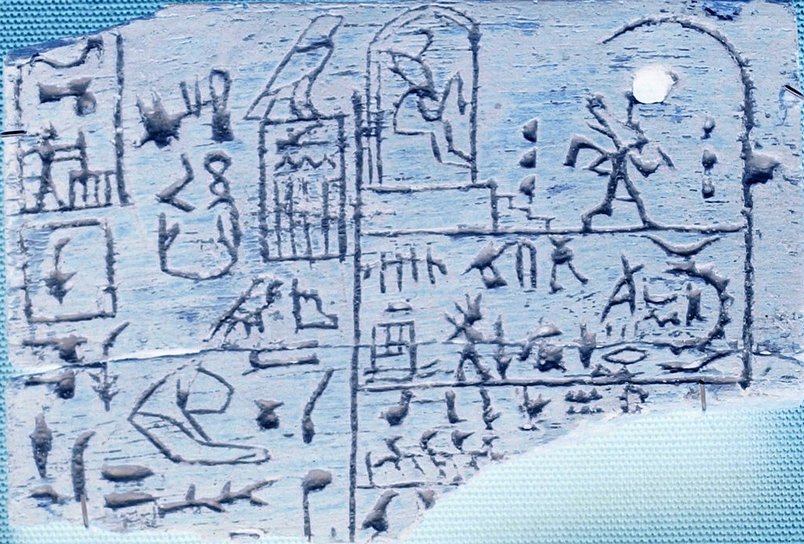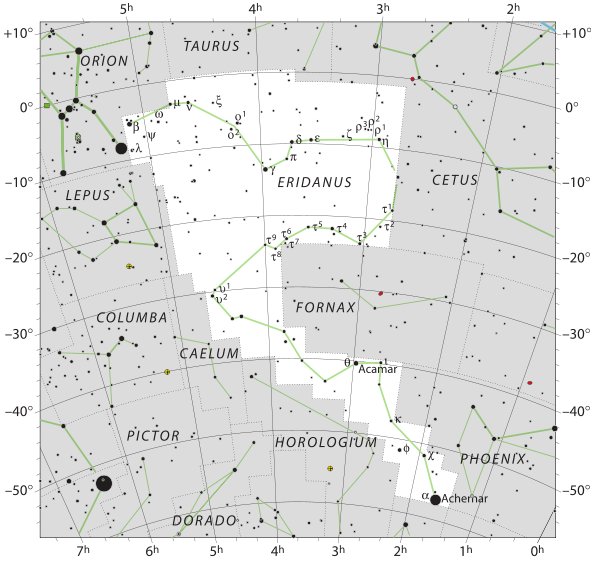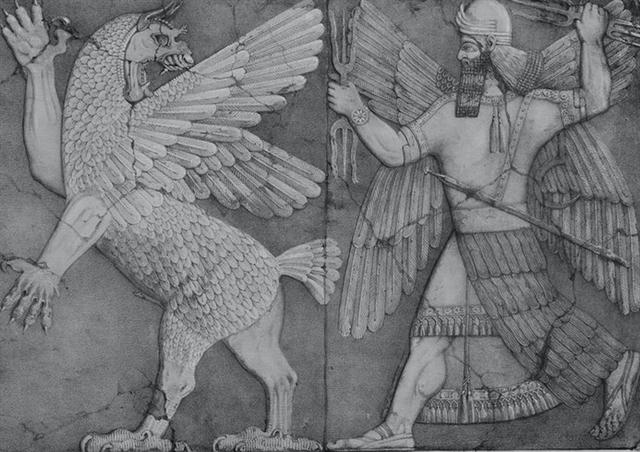The 2nd list of place names was connected with Pu Pakakina. It was from there that Makoi made his 1-day wintershins (as regarded from a point south of the equator) cycle around the island:
... Again he glanced, this time in the direction of Pu, and the ornament of Pu shone brightly. [Pu was the name of the place with a hole in the stone at Apina Nui. Maybe Pi(i) was meant to be the opposite of Pu, as when right is contrasted with left.] Again he went out into the sea. From the middle, the two necklaces around the neck of the two figurines shone (toward him). His ride on the wave ended in Rio, and therefore the name 'Hanga O Rio' was given. [There were 2 necklaces, but the story recounts only how one of them was used around the neck of the stone figure Apina Iti. The other stone figure was Rapa Kura and nothing is said if also this figure was buried up to her neck or not. Instead the name of the Apina Iti figure was strangely changed to Apina Iti A Rapa Kura. If Barthel has translated the story correct, then it contains puzzles to solve. Was the Apina Iti statue joined to the Rapa Kura statue when he got the necklace around his neck? But then the name changed again, this time to Hinariru, the son of Tuu Hokorua, where indeed the latter name is in harmony with my question - 'in a group of two'.]
Ira remained on shore, pondered, and said, 'This is well done! Ruhi to the right, Pu to the left, and Hinariru Nui and Hinariru Iti in the middle.'
"They all got up, climbed up, and entered into the cave. Ira said to Makoi: 'You are the one who shall stay here. We on the other hand, have to turn around.' Makoi replied, 'All right with me!'
Then Ira continued to speak to Makoi: 'Tomorrow, when it grows light, set out and name the places beginning with Apina.' Makoi replied, 'How shall I give the names?' Again Ira spoke, 'In Hiva are the names that are to be taken to name (the places of the new land).'
It grew light and Makoi got up. He set out and came to Apina. When he arrived there, he gave the name 'This is Apina Iti, this is Rapa Kura.' He went on and came to Hanga O Ua. He gave the name 'This is Hanga O Ua of the beautiful wave (vave renga).'
Makoi went on, giving names, until he had made a (complete) circle around both sides (of the island). In Apina Nui a stone (maea) was erected, saying that the naming was done on a (round) trip during a single day."
This was the 5th day after 4 days of surfing. I think it means Makoi made his speedy 'circumnavigation' of the whole Easter Island in order to confirm that he (like the first pharaoh Den of the combined kingdoms of Upper and Lower Egypt) was the ruler of the whole land. He was like the Sun who hurried around the Earth in a single day.
... The upper right register depicts king Den twice: at the left he is sitting in his Hebsed pavilion, at the right he is running a symbolic race around D-shaped markings. This ceremony is connected to the so-called 'race of the Apis bull' ...

There is a hole (pu) in the ebony plaquet.
... When he reappears he is clothed as in the Narmer palette, wearing the kilt with Hathor belt and bull's tail attatched. In his right hand he holds the flail scepter and in his left, instead of the usual crook of the Good Shepherd, an object resembling a small scroll, called the Will, the House Document, or Secret of the Two Partners, which he exhibits in triumph, proclaiming to all in attendance that it was given him by his dead father Osiris, in the presence of the earth-god Geb. 'I have run', he cries, 'holding the Secret of the Two Partners, the Will that my father has given me before Geb. I have passed through the land and touched the four sides of it. I traverse it as I desire.' ...
There is only one glyph in the C text which apperas to be fitting, viz. that for April 8, where we can count 14 * 21 = 294 (mabye 42 weeks) = 384 - 90 = 464 -170.
| March 30 |
31 |
April 1 (91) |
| September 30 (273) |
October 1 |
2 |
 |
 |
 |
| *Ca14-12 |
*Ca14-13 |
*Ca14-14 |
| te kihikihi |
o te henua - kua haga hia |
kua pua |
| ξ Phoenicis (9.0), ρ Tucanae (9.1), Deneb Kaitos, η Phoenicis (9.4) |
Achird (10.7) |
ρ Phoenicis (11.2), η Andromedae (11.4) |
| no star listed (193) |
κ Crucis (194.4), ψ Virginis (194.5), μ Crucis, λ Crucis (194.6), Alioth (194.8) |
Minelauva (195.1), Cor Caroli (195.3) |
| April 2 (92) |
3 |
4 (460) |
| October 3 |
4 (277) |
5 |
 |
 |
 |
| *Ca14-15 (378) |
*Ca14-16 |
*Ca14-17 |
| te vero |
te henua |
kiore - te henua |
| Cih, λ Tucanae (12.4) |
no star listed (13) |
no star listed (14) |
| δ Muscae (196.5), Vindemiatrix (196.8) |
13h (197.8) |
Apami-Atsa |
The surfing 'turtles' would then come 4 days earlier, in April 4 (460 days counted from January 1 in the preceding year). From there 12 days remained of the cycle, in order to reach day 80 + 392 = 472 = 16 * 29½:
| April 11 |
12 (468) |
13 |
| October 12 (285) |
13 |
14 |
 |
 |
 |
| *Ca14-24 |
*Ca14-25 |
*Ca14-26 |
| te henua |
te honu kau |
manu kake rua |
| δ Phoenicis (21.5) |
no star listed (22) |
Achernar (23.3) |
| Heze (205.0) |
ε Centauri (206.3) |
no star listed (207) |
| April 14 |
15 |
16 (106) |
| October 15 |
16 |
17 (290) |
 |
 |
 |
| *Ca14-27 |
*Ca14-28 |
*Ca14-29 (392) |
| te henua |
te honu |
te rima |
| no star listed (24) |
no star listed (25) |
POLARIS, Baten Kaitos (26.6), Metallah (26.9) |
| τ Bootis (208.2), Benetnash (208.5), ν Centauri (208.7), μ Centauri, υ Bootis (208.8) |
no star listed (209) |
Muphrid (210.1), ζ Centauri (210.3) |
Possibly Pu Pakakina is a world play based on the idea of a hole (pu) from which the Sun will climb up (kake), from his 'hole in the rock' (ana). Pu Pa-kaki-(a)na. This ana could be at Achernar, where there is a dot in front and where Metoro said manu kake rua. *Ca14-26 should make us count 14 * 26 = 364. From Achernar there is a great climb upwards from the Phoenix bird of fire, following Eridanus: 
| Ana 1. Cave. 2. If. 3. Verbal prefix: he-ra'e ana-unu au i te raau, first I drank the medicine. Vanaga.
1. Cave, grotto, hole in the rock. 2. In order that, if. 3. Particle (na 5); garo atu ana, formerly; mee koe ana te ariki, the Lord be with thee. PS Sa.: na, an intensive postpositive particle. Anake, unique. T Pau.: anake, unique, to be alone. Mgv.: anake, alone, single, only, solely. Mq.: anake, anaé, id. Ta.: anae, all, each, alone, unique. Anakena, July. Ananake, common, together, entire, entirely, at once, all, general, unanimous, universal, without distinction, whole, a company; piri mai te tagata ananake, public; kite aro o te mautagata ananake, public; mea ananake, impartial; koona ananake, everywhere. Churchill.
Splendor; a name applied in the Society Islands to ten conspicious stars which served as pillars of the sky. Ana appears to be related to the Tuamotuan ngana-ia, 'the heavens'. Henry translates ana as aster, star. The Tahitian conception of the sky as resting on ten star pillars is unique and is doubtless connected with their cosmos of ten heavens. The Hawaiians placed a pillar (kukulu) at the four corners of the earth after Egyptian fashion; while the Maori and Moriori considered a single great central pillar as sufficient to hold up the heavens. It may be recalled that the Moriori Sky-propper built up a single pillar by placing ten posts one on top of the other. Makemson. |
| Rua 1. Two; second; other (precedes the noun); te rua paiga, the other side. 2. Hole, grave; holes in the rocks or between the rocks of the coastal lagoons; he keri i te rua, to dig a hole. 3. To vomit. Vanaga.
1. Two. P Mgv., Ta.: rua, id. Mq.: úa. 2. Nausea, seasickness, to vomit, disgust; hakarua, to vomit, to spew. PS Mgv.: aruai, ruai, to vomit. Mq.: úa, id. Ta.: ruai, id. Pau.: ruaki, id. Sa.: lua'i, to spit out of the mouth; lulua, to vomit. To.: lua to vomit. Fu.: lulua, luaki, id. Niuē: lua, id. Viti: lua, id.; loloa, seasick. 3. Cave, hollow, ditch, pit, hole, beaten path, grave; rua papaka, a ditch. P Pau.: rua, a hole. Mgv.: rua, a hole in the ground, ditch, trench. Mq.: úa, dish, hole, cavern. Ta.: rua, hole, opening, ditch. Churchill.
Ta.: ruahine, an old woman. Ma.: ruahine, id. Ta.: ruaroa, tropic of Capricorn. Mq.: uaoa, a constellation, the eleventh month. The sense in Tahiti is probably that of some constellation which may be used to determine the position. Ta.: ruau, an old man, an old woman. Ha.: luau, a parent. Churchill. |
LUA, s. Haw., a pit, hole, cave; v. to dig a hole; also in ancient times a process of killing a man by breaking his back or bones; lua-lua, be flexible, pliant, soft, old garments, a road with many small ravines crossing it; lua-u and lua-ni, a parent; lua-hine, an old woman. Mang., rue-ine, id.
Sam., lua, hole, pit; lua-o, an abyss. Tah., rua, hole, pit; rua-rua, to slander, to backbite; rufa, worn out, as garments; rua-u, old, stricken in years; s. old man or woman.
Tong., luo, hole. N. Zeal., rua, id. Fiji., rusa, decayed perished. Malg., loakh, luaka, hole, cave, pierced.
Greek, τρυω, τρυχω, to rub down, wear out, waste; τρυςω, toil, labour; τρυπα, τρυμη, a hole; τρυπανον, a borer, auger; τρυχος, a tattered garment, rags; τρυφη, softness, delicacy; θρυπτω, break in pieces. Liddell and Scott refer these words to τειρω, to rub, rub away, as derivatives of it, wear out, and τειρω, to the Sanskrit tŗi, to pass over, hasten, fulfil, &c. Benfey also concurs in that derivation when he refers τρυμα, a hole, and τρυτανη, the tongue of a balance, to the same tŗi.
With due deference to so great authorities, I would suggest that the above group of Greek words be referred to the Sanskrit ru, lu, lædere, secare, with the prefix t; and they would thus at once fall into line with their Polynesian relatives, whose development of sense is perfectly analogous to the Greek group, though their development of form has been arrested.
It may be noted, moreover, as distinctive of the two roots, tŗi and ru, that while from the former - to pass over frequently, to rub, to smootheen - the idea of 'young, fresh, a youth' (taruna), 'soft, delicate' (τερην), 'tender, soft, and childhood' (tener), were developed, the root ru, lu, gave birth to the idea of 'old age, weakness, crumpled, flexible, as an old garment'; lua, lua-u, τρυχος.
Lat., trua, trulla, a tray, ladle, basin; ruo , to tumble down, but whose primary sense must have been 'to dig', as evidenced in the phrase 'ruta et cæsa', and in rutrum, a spade, mattock. Quære, rus, country, from ruo, to dig, cultivate?
Goth., riurs, mortal, corruptible. Scand., rye; Swed., rycka, pull up, pluck out. Anc. Slav., ryti, to dig; ruvati, to tear away. Irish, ruam, a spade; rumhar, a mine; rumahar, labour. (Fornander)
|
The distinction between the two roots tŗi and ru (evoking the ideas of young, quick, frequent, respectively its opposite, old and weak) is the consonant 't' (in Egypt as a suffix meaning 'female'). The young Sun was in Babylonia named Marduk (he who cut the Tiamat chaotic sea monster).
"Marduk (Sumerian spelling, in Akkadian: AMAR.UTU ... 'solar calf'; perhaps from MERI.DUG; Biblical Hebrew ... Merodach; Greek Μαρδοχαιος, Mardochaios) was the Babylonian name of a late-generation god from ancient Mesopotamia and patron deity of the city of Babylon, who, when Babylon became the political center of the Euphrates valley in the time of Hammurabi (18th century BC), started to slowly rise to the position of the head of the Babylonian pantheon, a position he fully acquired by the second half of the second millennium BC. In the city of Babylon, he resided in the temple Esagila.
According to The Encyclopedia of Religion, the name Marduk was probably pronounced Marutuk. The etymology of the name Marduk is conjectured as derived from amar-Utu (bull calf of the sun god Utu).The origin of Marduk's name may reflect an earlier genealogy, or have had cultural ties to the ancient city of Sippar (whose god was Utu, the sun god) ..." (Wikipedia)

(Chaos Monster and Sun God)
|









